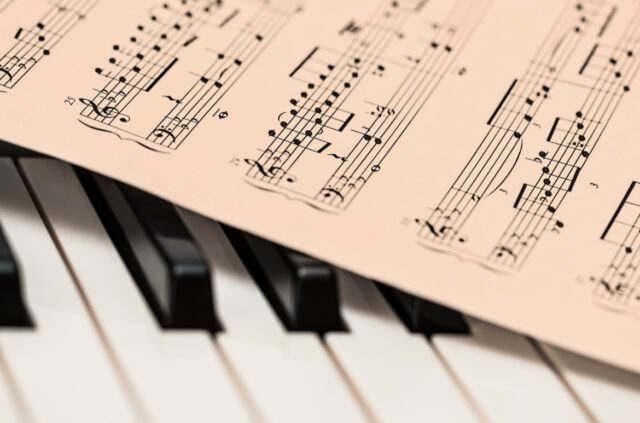Music, an art form that resonates with the very core of human emotion and culture, is on the cusp of a seismic shift. For generations, it has been the mirror reflecting societal changes, technological advancements, and cultural evolutions.
As we stand at the threshold of a new era in music, it’s important to recognize the dynamic and ever-evolving nature of this art form. Just as music adapts and changes, so do our ways of entertainment and leisure. In this context, it’s interesting to note how online entertainment platforms, particularly casinos, are also evolving.
For instance, many online casinos now offer a staggering 400% deposit bonus, drawing parallels with the music industry’s knack for constantly upping the ante and offering more to its audience.
As we delve into the future of music, let’s explore the underlying patterns and trends that suggest a major transformation is imminent.
The 30-Year Cycle
Historical Patterns
The 30-year cycle in music represents a fascinating rhythm of cultural and artistic change. Every three decades, the music landscape seems to undergo a significant shift, almost as if it’s in sync with a broader generational change.
This cycle has consistently heralded the arrival of new musical genres, each rising in rebellion against the existing mainstream sounds, embodying the spirit of the times, and often serving as a voice for cultural and societal shifts.
- Early 20th Century: In the 1900s, classical music dominated the scene, reflecting the order and tradition of the time. By the 1930s, however, jazz emerged as a counterpoint to classical music’s structure, embodying freedom and innovation, and resonating with a society undergoing rapid changes.
- Mid-20th Century: The 1950s and 1960s marked the advent of rock ‘n’ roll, a rebellious and energetic genre that spoke to the youthful spirit of post-war generations. This was a departure from the sophistication of jazz, capturing a more raw and direct emotional expression.
- Late 20th Century: By the 1990s, hip-hop had begun to ascend. Originating from the streets, it represented a powerful cultural movement that was not just about music but also about storytelling, identity, and resistance, offering a stark contrast to the rock dominance of previous decades.
The Rise of New Genres
As we venture into the 2020s, the 30-year cycle suggests that we’re on the cusp of another seismic shift in the musical landscape. This period could be marked by the birth and rise of a new genre, one that is likely simmering in the underground scenes, waiting for its moment to ascend.
- Emerging from the Underground: The next big genre is probably taking shape in small, independent scenes, far from the mainstream limelight. It might be a fusion of existing genres or something entirely new, drawing on the rich tapestry of global sounds and the interconnectedness of today’s world.
- Technological Influence: Unlike previous eras, technology, especially the internet and platforms like TikTok, play a significant role in shaping and disseminating new music. This means the new genre might arise faster and spread more quickly than its predecessors.
- Cultural Reflection: The new genre is likely to reflect current societal concerns and interests, possibly embracing themes of digital connectivity, global awareness, and a blending of cultural influences, in contrast to the more localized or nationalistic themes of past genres.
The Impact of Technology
Digital Revolution
The digital revolution has fundamentally altered the music landscape in unprecedented ways. This era of transformation is marked by the democratization of music creation and distribution, breaking down barriers that once kept the industry gatekept by a few major players.
- Accessibility to Music Production: Advancements in technology have made music production more accessible than ever before. Affordable software and home recording equipment enable budding artists from all backgrounds to create studio-quality music without significant investment, fostering a diverse range of voices and styles.
- Diverse Distribution Channels: Digital platforms have also revolutionized how music is distributed. Streaming services, online radio, and music-sharing sites have replaced traditional distribution channels like physical albums and radio plays, enabling artists to reach global audiences directly and instantly.
- Empowering Independent Artists: This digital era has empowered independent artists, allowing them to build careers outside the traditional music industry framework. Social media and direct-to-fan platforms provide artists with tools to market their music, engage with fans, and monetize their work in innovative ways.
- Rapid Evolution of Genres: The ease of access to a wide array of music has led to a rapid evolution of genres, with artists drawing inspiration from a global pool of music and creating unique, hybrid styles that defy traditional genre boundaries.
The TikTok Phenomenon
TikTok, a relatively new entrant in the social media landscape, has had a disproportionate impact on the music industry. This platform illustrates the evolving relationship between technology and music, highlighting a trend-driven future that challenges conventional industry norms.
- Resurrecting Old Hits: TikTok has the unique ability to breathe new life into old songs. Tracks from decades past have found renewed popularity as they become the soundtrack to viral challenges and trends, demonstrating the platform’s power to influence music consumption across generations.
- Spotlight on Obscure Genres: TikTok has also been instrumental in spotlighting obscure or niche genres, which might never have gained mainstream attention otherwise. Its algorithm, tailored to individual preferences, allows users to discover and propagate less-known music styles, broadening the musical tastes of its vast user base.
- Influencing Music Production: The nature of TikTok, with its short-form content, is influencing how music is being produced. Artists and record labels are now considering the ‘TikTokability’ of a song — its potential to go viral on the platform — sometimes even tailoring tracks to fit TikTok’s format and trends.
- Shifting Music Discovery: The traditional methods of music discovery, such as radio play or music reviews, are being supplemented (and in some cases, replaced) by social media platforms like TikTok. User-driven content on these platforms is creating a more organic and dynamic means of music discovery and promotion.
The Influence of Cultural Dynamics
Global Fusion
The era of increased global connectivity, facilitated by advancements in technology and the internet, has given rise to a phenomenon in music that can be best described as ‘Global Fusion.’ This fusion represents more than just a melding of styles; it is a reflection of the cultural and musical exchanges happening across the world.
Cross-Cultural Collaborations: Artists from diverse cultural backgrounds are collaborating more than ever, leading to an intriguing blend of musical traditions. These collaborations often result in a unique sound that cannot be pigeonholed into a single genre, offering listeners a taste of global harmony.
Emergence of Hybrid Genres: As borders blur in the digital world, musicians are increasingly experimenting with combining elements from various musical traditions. This experimentation has given birth to hybrid genres that would have been unimaginable a few decades ago, offering a fresh and exciting musical landscape.
Influence of World Music: The growing popularity of world music has introduced audiences to sounds from remote corners of the globe. This exposure is not only educating listeners but also inspiring artists to infuse their work with diverse, global influences, leading to a richer, more varied musical tapestry.
Technology as a Bridge: Digital platforms and music software have become bridges connecting musicians across continents, enabling them to merge sounds seamlessly, despite geographical distances. This ease of collaboration has accelerated the pace of global fusion in music.
Nostalgia and Innovation
Contemporary music increasingly features a blend of nostalgia and innovation, as artists revisit the past to inspire the future. This trend is leading to a musical landscape that respects its roots while forging new paths.
- Retro Revival: There’s a growing trend among artists to revive and reinterpret sounds from past decades. This retro revival not only appeals to older generations but also introduces younger audiences to the music of bygone eras, albeit with a modern twist.
- Innovative Sampling: Sampling, a technique that involves reusing portions of existing recordings, has become a tool for blending the old with the new. Artists are sampling classic tracks, and infusing them into contemporary music to create a bridge between the past and the present.
- Genre-Blending: Modern artists are increasingly blending elements from different eras, creating music that is rooted in tradition yet sounds distinctly futuristic. This approach is not just about nostalgia; it’s about reimagining and reinterpreting the past in a way that resonates with today’s audience.
- The Role of Technology in Nostalgia: Advances in music technology have enabled artists to recreate and reprocess sounds from the past with greater fidelity and creativity. Digital tools allow for the manipulation of classic sounds, integrating them seamlessly with contemporary musical elements.

Predicting the Future
Shorter Cycles
In the rapidly evolving digital landscape, the dynamics of music trends are undergoing a significant transformation, leading to much shorter lifecycles than witnessed in previous decades.
- Accelerated Trend Adoption: With the proliferation of social media and streaming platforms, new musical trends can gain popularity overnight, reaching global audiences instantly. This immediacy results in trends peaking and fading away much quicker than in the past.
- Impact of Social Media: Platforms like TikTok, Instagram, and YouTube play a pivotal role in shaping music tastes. A song can go viral on these platforms within hours, but its popularity may also wane rapidly as audiences move on to the next viral sensation.
- Consumer Attention Span: The digital age has contributed to shorter attention spans among audiences. Listeners are constantly seeking new and varied content, driving artists and producers to continually innovate to maintain engagement.
- Frequent Release Cycles: Artists are adapting to this fast-paced environment by releasing music more frequently. The traditional album cycle is being supplanted by a steady stream of singles and EPs, keeping the content fresh and audiences engaged.
The Rise of Genre-Blending
The future of music is likely to witness an unprecedented rise in genre-blending, a trend that has been gaining momentum but is poised to become more prominent in the coming years.
- Breaking Traditional Boundaries: Artists are increasingly stepping outside traditional genre boundaries, combining elements from different musical styles. This experimentation is leading to the creation of unique, genre-defying music.
- Influence of Globalization: As artists around the world gain easier access to each other’s music, the influences become more diverse, leading to a natural blending of genres. This global exchange is fostering a creative environment where the fusion of genres is celebrated.
- Technology’s Role: Advances in music production technology make it easier for artists to experiment with and merge different sounds. Digital tools allow for seamless blending of genres that were once considered incompatible.
- Changing Listener Preferences: Modern listeners, especially younger audiences, show a preference for diversity in their music choices. This open-mindedness encourages artists to explore and combine different genres, knowing there’s a receptive audience for such innovative music.
- Collaborative Projects: Expect to see more collaborations between artists from different musical backgrounds. These collaborations will not only bridge genres but also cultures, reflecting the interconnected nature of the contemporary world.
Conclusion
The landscape of music is on the brink of a transformation, influenced by historical cycles, technological advancements, and cultural shifts. While the exact direction remains uncertain, one thing is clear: music will continue to evolve, mirroring the complexities and diversities of the human experience. As we enjoy this auditory evolution, it’s evident that music, in its essence, remains a fluid and adaptable art form. Poised to embark on its next exciting phase in the 2020s and beyond, the future of music promises to be as dynamic and diverse as the people and cultures that it continues to influence and reflect.




